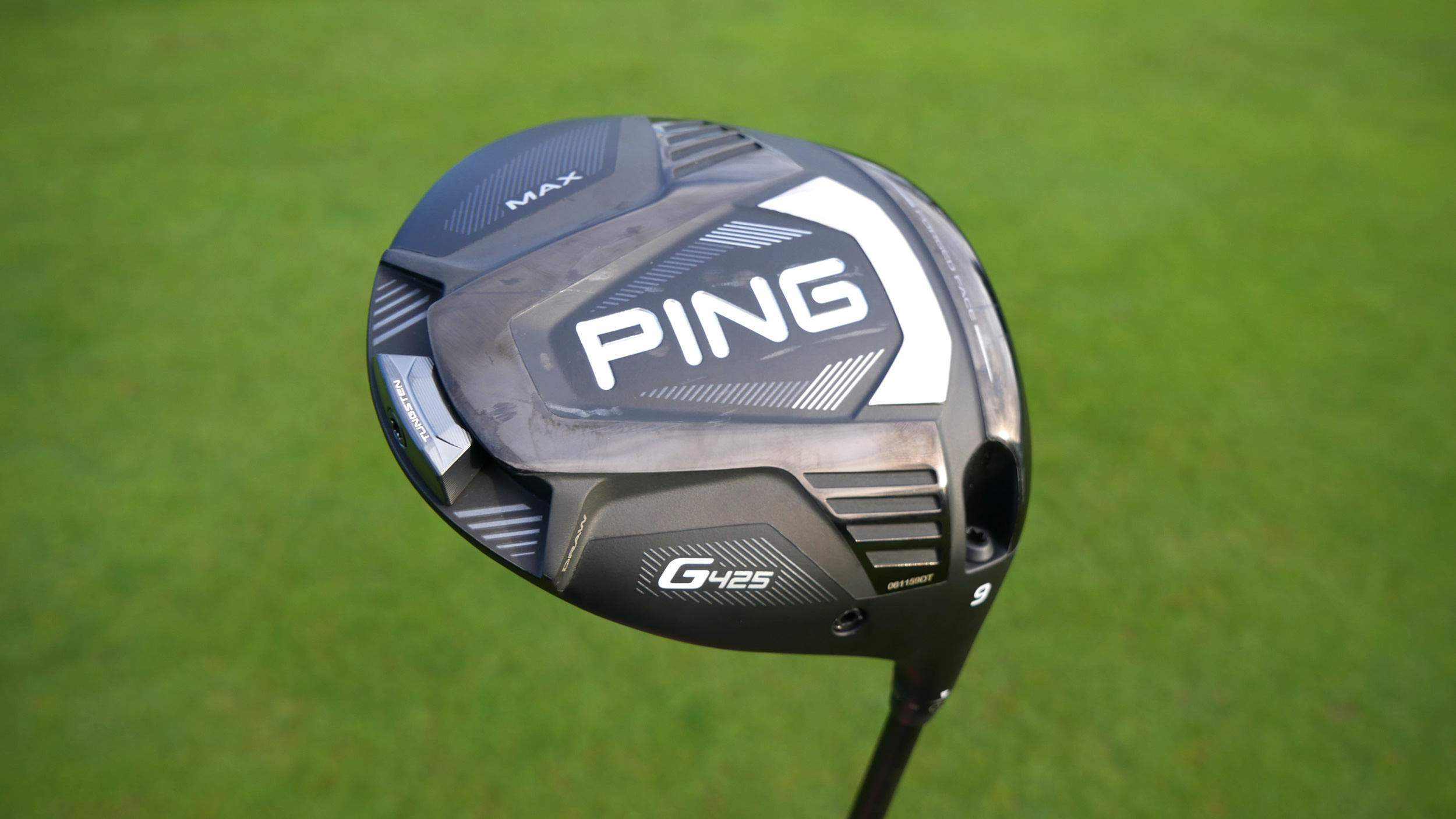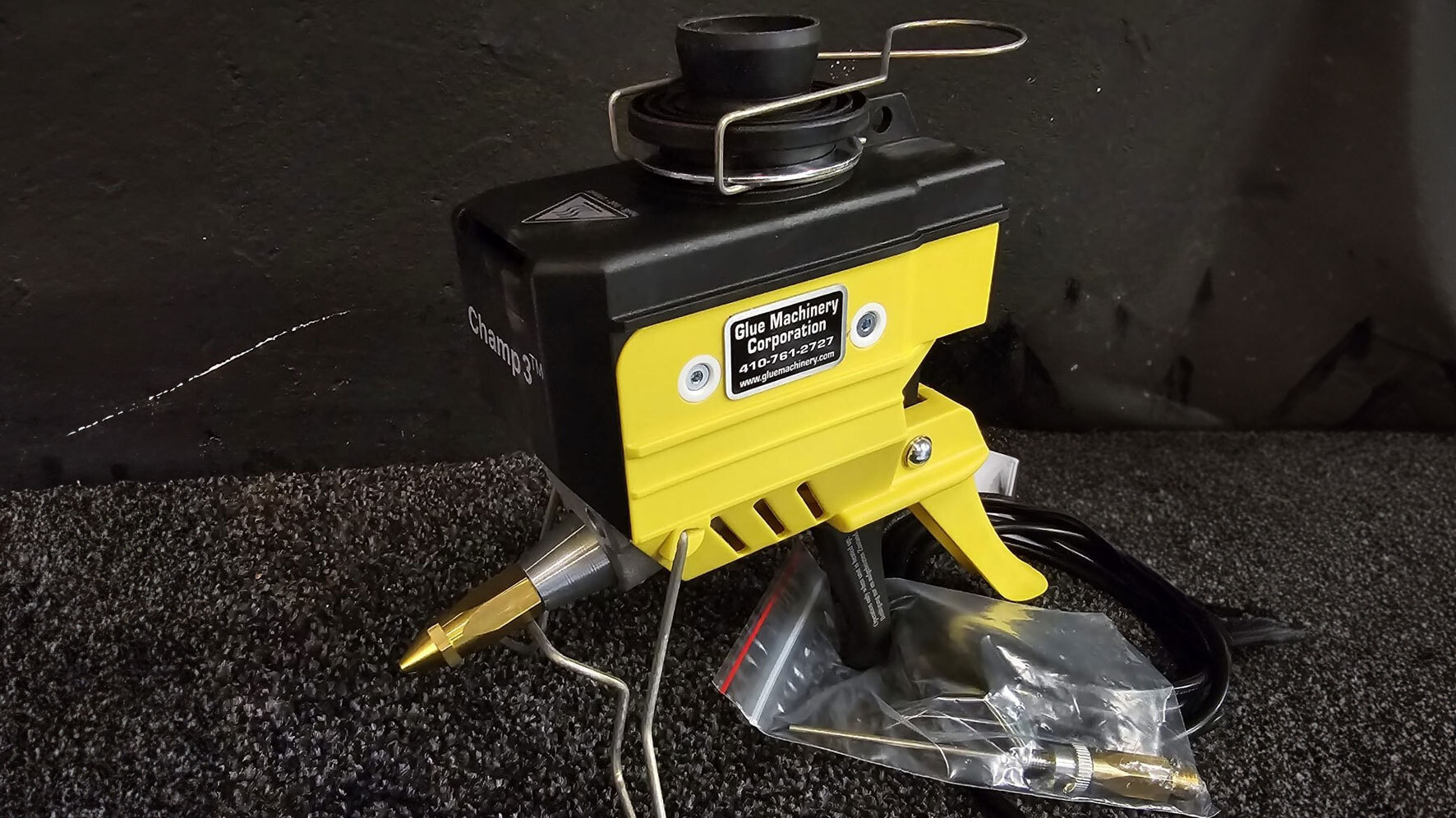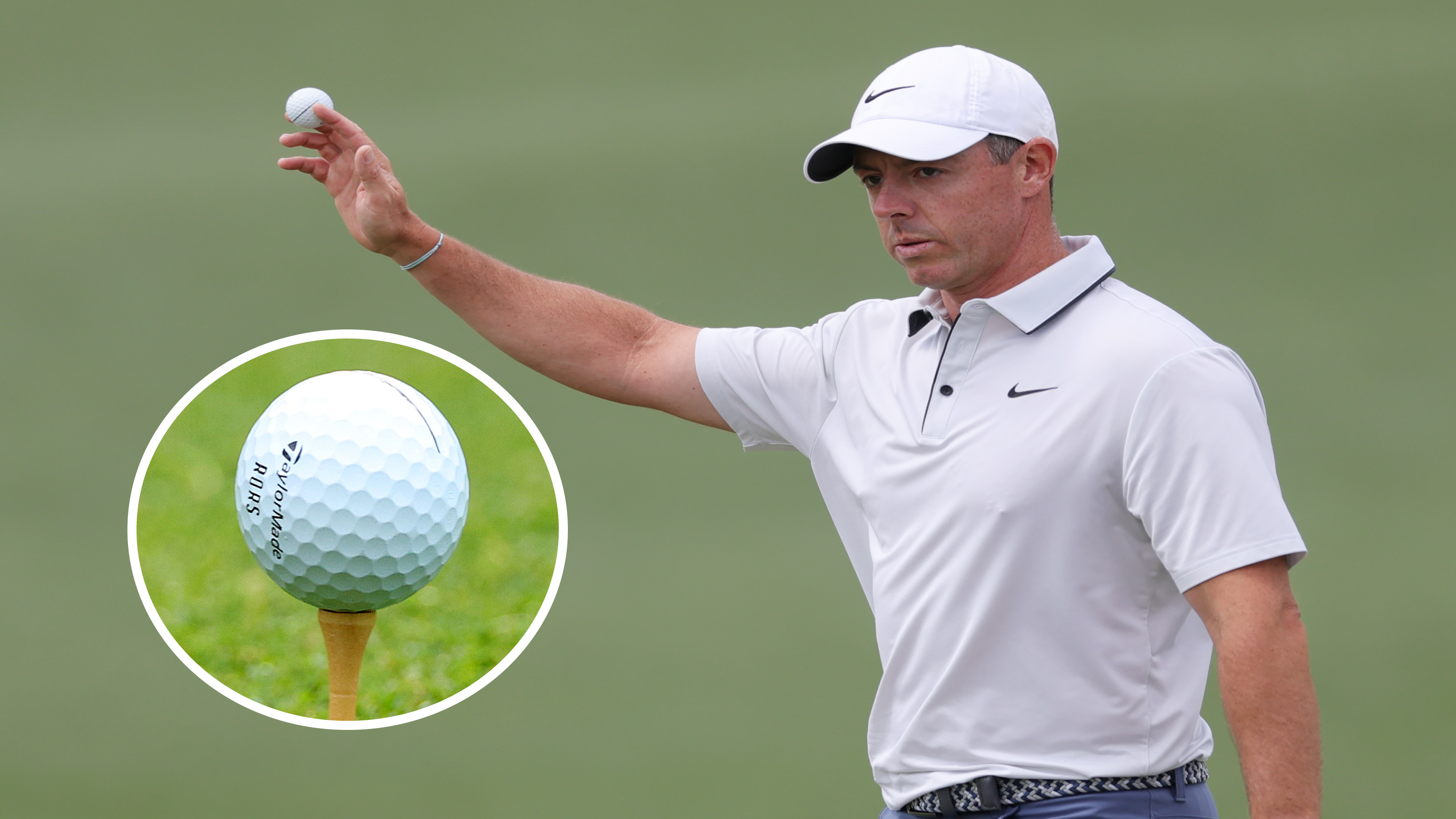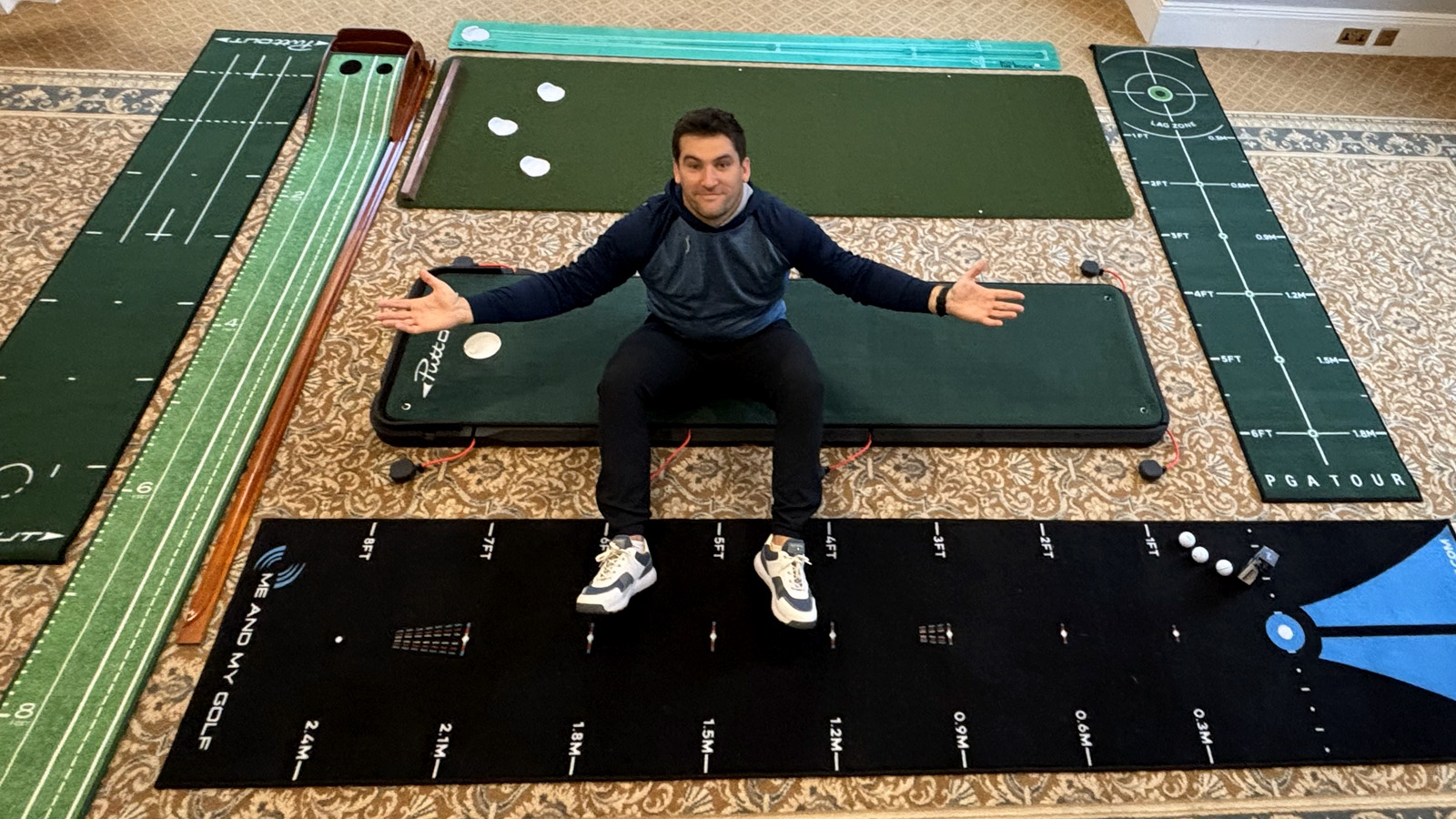What Is Hot Melt In Golf?
Most of the time it's a ‘tour only’ option, but what exactly is hot melt and how does it work?


Joe Ferguson
A topic that came up recently on the Golf Monthly Kick Point Gear podcast is that of hot melt, which begs the question... what is hot melt and how does it affect the performance of golf clubs?
Put simply, hot melt is a heated glue typically placed inside a hollow club head, primarily drivers, fairway woods and hybrids. Hot melt is the modern replacement for lead tape, which was previously used by tour pros (and still is occasionally) in previous years to change the weight distribution on the club head as well as the sound and feel characteristics.
WHAT IS HOT MELT USED FOR?
There are two main uses for hot melt with modern golf equipment and the first is to alter weight distribution in the head, which changes the CG (Center of Gravity).
It’s worth noting that given the advancement of golf equipment and the number of drivers and fairway woods we can purchase with adjustable weights on the head, using hot melt for changing the weight of a clubhead is not as prevalent now as it was two decades ago.
Players in the past would often use lead tape on their clubs to change the weight of the head to their liking. For example – if a player was missing to the right with his or her driver, they may have added lead tape to the heel portion of the club head for a more dynamic closure of the face as it reaches impact.
Lead tape is still widely used on putters in particular, but a lot less so on drivers and other fairway metals. This is largely because lead tape isn’t the prettiest look on the sole – but also because of the emergence of hot melt.

An example of a hot melt glue gun
The second main use for hot melt is to alter the acoustics. What is the point of a shiny new driver if it sounds like you’re smashing a golf ball off a frying pan every time you hit it?
Get the Golf Monthly Newsletter
Subscribe to the Golf Monthly newsletter to stay up to date with all the latest tour news, equipment news, reviews, head-to-heads and buyer’s guides from our team of experienced experts.
Hot melt, once inserted inside the head of a driver or fairway wood, can be used to significantly change the acoustics of the club at impact with the golf ball, generally dampening vibration and muting the sound somewhat.
As mentioned by our own equipment expert Joe Ferguson on the first episode of the Kick Point podcast, numerous tour pros use hot melt to fine tune how their clubs sound at impact.
Joe highlighted one tour player who used the Ping G425 driver with extensive hot melt in the head for the sole purpose of changing the loud, high-pitched noise the driver produced into something more subtle.
WHAT ARE THE BENEFITS OF HOT MELT
Using hot melt allows players to make those little tweaks to their clubs that can make all the difference from a psychological point of view.
Hot melt can be used in such small amounts, too, meaning those players who need the smallest weight adjustments can do so without adding a clunky, ugly-looking strip of lead tape to the bottom of the club head.
As mentioned, those little tweaks can include changing the acoustics of the golf club, with hot melt being used to subtly dampen the noise at impact. This is a common practice in the makings of modern clubs by equipment manufacturers today.
WHAT ARE THE RISKS OF USING HOT MELT?
Given it’s a hot glue being poured into the hollow head of a golf club, if a player does not like the adjustments the melt has made it can be difficult to reverse such tweaks. Joe mentions on the podcast that the only way to remove hot melt from a club face is to “heat the club head to within an inch of its life” so the hardened glue can softly and drop out of the head. Once the hot melt is in the head, whether you’ve put too much in or it’s in the wrong place, it’s a difficult procedure to remove the melt.

Conor joined Golf Monthly on a permanent basis in late 2024 after joining their freelance pool in spring of the same year. He graduated with a Masters degree in Sports Journalism from St Marys University, Twickenham in 2023 and focuses on the reviews and Ecommerce side of proceedings. Hailing from Newcastle, Northern Ireland, Conor is lucky to have Royal County Down as his home golf course. Golf has been a constant in his life, beginning to play the game at the age of four and later becoming a caddy at RCD at just eleven years old. Now 26, Conor has caddied over 500 rounds in a 12-year-long caddying career at one of the best courses in the world. Playing to a four handicap, you’re likely to find him on his local driving range trying (and failing) to hit a Shane Lowry-esc stinger that helped him win The 148th Open Championship at Royal Portrush.
In the bag:
Driver: Ping G
3 wood: Callaway Epic
Hybrid: Ping G425
Irons: Mizuno JPX 900 Tour
Wedges: Taylormade Milled Grind 52,56,60
Putter: Scotty Cameron Phantom x9.5
- Joe FergusonStaff Writer
-
 LIV Golf Mexico City 2025 Picks, Odds And Predictions
LIV Golf Mexico City 2025 Picks, Odds And PredictionsCheck out the odds for the leading players at LIV Golf Mexico City as well as our favorite and outside picks for this week's tournament in Naucalpan
By Jonny Leighfield
-
 Ever Found These Hidden Nasties In Your Golf Bag? Why Post-Round Care Is Vital
Ever Found These Hidden Nasties In Your Golf Bag? Why Post-Round Care Is VitalIt is easy to put away your golf bag and forget about going through the pockets, leaving in items which will case problems later down the line...
By Roderick Easdale
-
 Could This 'Stumbled Upon' Equipment Switch Finally Land Rory McIlroy the Grand Slam?
Could This 'Stumbled Upon' Equipment Switch Finally Land Rory McIlroy the Grand Slam?Rory McIlroy made a golf ball change earlier this season that has reignited his wedge play and it could be about to pay off in the most dramatic possible way…
By Joe Ferguson
-
 Real Players Use Long Irons, Right? Well, Fred Couples Nearly Made The Cut At The Masters At 65 Years Old, And His Longest Iron Is A…
Real Players Use Long Irons, Right? Well, Fred Couples Nearly Made The Cut At The Masters At 65 Years Old, And His Longest Iron Is A…Both Couples and Bernhard Langer turned back the clock brilliantly over the first two days at Augusta National and did so with some interesting bag setups.
By Joe Ferguson
-
 I Built Tiger Woods’ 2019 Masters Winning Bag From The Second-Hand Market!
I Built Tiger Woods’ 2019 Masters Winning Bag From The Second-Hand Market!PGA Professional Joe Ferguson has been taking a deep dive into Tiger’s bag for arguably the greatest victory of his career…
By Joe Ferguson
-
 How Titleist 'Used Every Tool In The Toolbox' To Enhance The New Pro V1 And Pro V1x Golf Balls
How Titleist 'Used Every Tool In The Toolbox' To Enhance The New Pro V1 And Pro V1x Golf BallsAfter months of testing and tour validation the new Titleist Pro V1 and Pro V1x golf balls are set to launch, but what's new? We explain all
By Sam De'Ath
-
 How The New Cobra DS-ADAPT Range Looks To Have Changed Driver Fitting Forever
How The New Cobra DS-ADAPT Range Looks To Have Changed Driver Fitting ForeverWith a revolutionary hosel design and refined aerodynamics, the Cobra DS-ADAPT may just become the standout driver in 2025
By Sam De'Ath
-
 £39 Vs £169 Wedge Test... Surprising Results!
£39 Vs £169 Wedge Test... Surprising Results!In his latest Retro Review, Joe Ferguson sees if the original Vokey wedge picked up for just £39 can compete with the modern equivalent four times the price
By Joe Ferguson
-
 7 Useful Golf Rangefinder Features You Never Knew About
7 Useful Golf Rangefinder Features You Never Knew AboutThink you know everything a rangefinder can do? Think again. We've got seven of the best features currently available on the best modern rangefinders
By Dan Parker
-
 Do Putting Mats Help Improve Your Putting?
Do Putting Mats Help Improve Your Putting?Former professional golfer Sam De’Ath sheds light on whether or not a home putting mat can help improve your performance on the greens
By Sam De'Ath